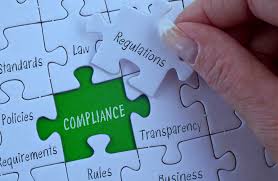The Disconnect Between Human Resources and Compliance

We can all remember those instances of matchmaking in our past — we were confident our friends, if they met each other, would fall in love and even get married. We believed that these two separate friends were “meant” for each other.
In the compliance context, I always expect Human Resources and Ethics and Compliance to be a perfect match. They have so much in common — HR and E&C both care about corporate culture, employee morale, training programs, interpersonal relationships, incidents and misconduct, and compliance with corporate policies and the law. They should have a close working relationship and take great pride in advancing the company’s culture, morale, and productivity.
But something is not working in this idealistic match. I am surprised when HR and E&C do not work well together, when there is internal sniping and lack of cooperation. In learning about a company, there are always tell-tale signs that something at HR and Compliance is not working. Here are a few signs I have witnessed:
The Silo Effect: In many situations, HR has used its unique “expertise” as a way to silo off any influence or control from outside forces. In these cases, HR often refers to its special role in managing employees, handling confidential employee information, understanding employee concerns and preventing any breakdown in employee morale.

The Confidential Data Block: In furtherance of the Silo Effect, HR professionals often promote the idea that HR handles very sensitive and confidential data relating to employee issues. This excuse is often used as a way to prevent E&C, Legal and other groups from accessing employee data on HR matters, employee reporting data on a hotline or walk-in reports, and HR-related internal investigations.
Professional HR Investigations: To prevent E&C (and sometimes Legal) from involvement in HR matters, HR professionals cite their “unique” expertise and familiarity with how to conduct investigations of HR issues. HR investigations can total as much as 80 percent of corporate-wide internal investigations. That fact, by itself, however, does not mean that E&C and Legal should be excluded from HR investigations. To the contrary, when working cooperatively, I have found that cross-function participation can enhance outcomes. Data sharing as a basic issue should be shared with E&C as a matter of course, and DOJ has supported this expectation. Nonetheless, some HR shop[s has clung to their data like life-raft in what they perceive is a governance flood.
HR professionals, as a rule, know better. Many HR professionals welcome E&C, Legal and other functions with open arms. In these situations, HR is a valuable and critical player in the overall corporate governance operations. HR and E&C are natural partners — they have so much in common.

Indeed, HR and E&C should be tied at the hip when it comes to managing and oversight of corporate culture. Employee incidents are often leading indicators of deteriorating culture. HR professionals usually identify early breakdowns in culture and can provide E&C with valuable insights. Working together, E&C and HR professionals often build effective culture surveys, focus groups, and other tools needed to manage culture. Further, HR data is an important indicator of where the company stands in employee morale, misconduct and potential areas of concern.














